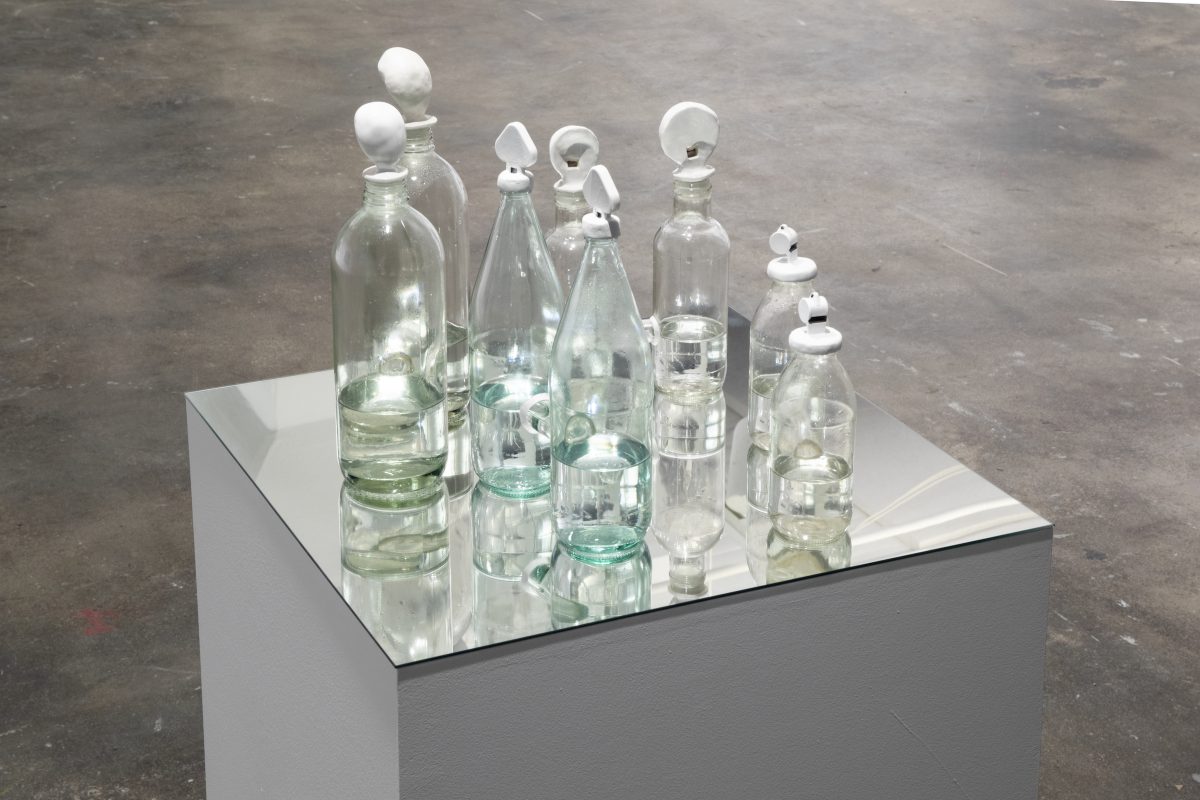
This year, amid the ups and downs of the pandemic, opportunities to go out and experience art have returned. To celebrate its MFA graduates, Hunter College opted for both an online and in-person MFA thesis exhibition. We Were Already Gone, which was briefly on display at Hauser & Wirth’s 22nd Street location, represents the fleeting nature of these final projects in the year of COVID, bringing together 26 candidates across the disciplines of painting, drawing, sculpture, and video. An expansive online platform showcases each artist’s contributions along with brief biographies and mission statements.
The exhibition confronts contemporary economic and cultural crises as well as the ongoing political reckoning around race and class. Candidates drew inspiration from Jacques Derrida’s theory of “hauntology” — that the past is always present in some capacity. Accordingly, the online platform, lingering after the works were packed away, embodies this residual visibility. Here are a few highlights from the show:

Jamaican-born filmmaker Simon Benjamin explores labor, toil, and time in the global periphery. In his film “Errantry,” a weathered lobster fisherman appears on two screens: At left, he pulls a rope submerged in the ocean on an infinite loop, while the right-hand frame shows him exploring a desolate island. Dry grass, old fences, and wandering cows debunk a mythical, imaginary Caribbean and draw unsettling comparisons to the plantation.
Chilean artist Rocío Guerrero creates interactive artworks addressing human nature and vulnerability. Her interactive installation, “Sobbing Water,” turns glass bottles of water into musical instruments. Viewers are encouraged to pick up the bottles, connected by long tubes of glass, and pass the water between them to cause a bird-like whistle through their spouts. Inspired by an Andean ancestral object, Guerrero adapts tradition to consider resource scarcity, replicating nature’s sounds in an institutional setting.

Illuminated sculptures by Topher Lineberry bring out the nonbinary artist’s visions of queer becoming. Their vast sculptural installation, “Kinstitution: Between Archive and Proposal,” draws on dystopian architectural themes and religious art. Colorful panels resemble pieces of stained glass, while bulkier structures appear as urban skylines and churches. The overall presentation of Lineberry’s tiny universe feels charming and malleable, like a dreamy stopover between realms of consciousness.

Leo Madriz channels the Central American migrant experience into an abstract domestic scene. Two colorful films blend and alternate in “Letters to Home, Pt. 1,” projected on a house structure modeled off the church of Solentiname, a utopian experiment from the Nicaraguan revolution. Various shots of Madriz with his grandmother interweave with his own narration, discussing how the promise of an American dream often fails to deliver.
In Matilde Benmayor’s vast installations, space colonization is portrayed as a mundane and sterile endeavor. Flashy yellow ladders descend from the ceiling, surrounded by empty space in “To Take Root” and “Péinate.” Jagged pieces of porcelain hang together like pieces of bone, hinting at the imperial history predating this new period of interstellar expansion.

We Were Already Gone continues online at Hauser & Wirth. The exhibition was curated by Hunter MA and MFA students Dana Notine, Jonas Albro, Daniel Berman, Dante Cannatella, Anna Cone, Sarah Heinemann, Mercedes Llanos, Amorelle Jacox, Liza Lacroix, Kimberly Nam, Joseph Parra, Lorraine Robinson, and Sigourney Schultz.
0 Commentaires